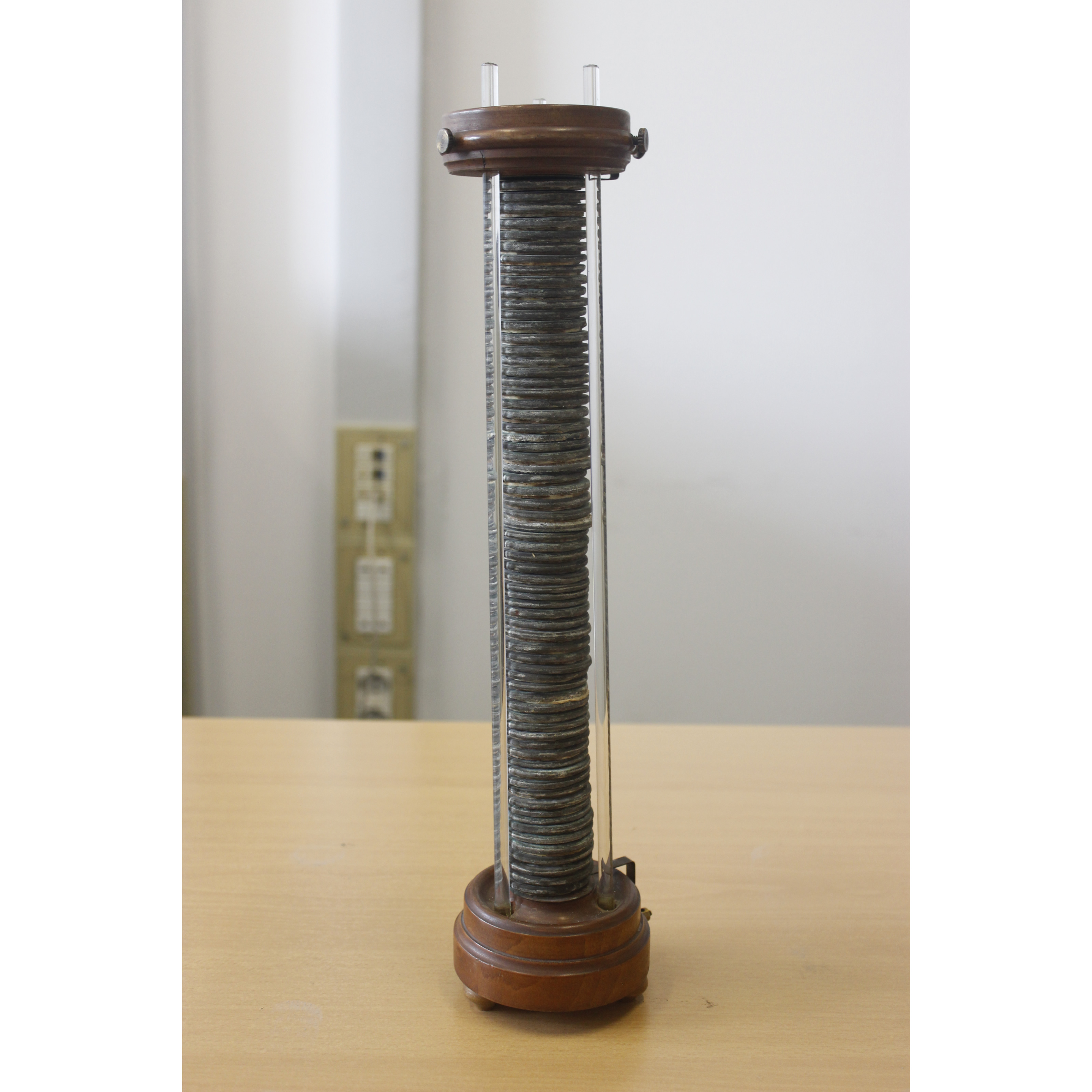
The Battery prototype is made up of similar elements, voltaic elements, superimposed to form a column. Each voltaic element consists of a copper and a zinc disc, joined by a layer of cardboard or felt, soaked in sulfuric acid. Silver can also be used instead of copper, while zinc can be replaced by tin. Alessandro Volta's battery can therefore be considered a column of galvanic cells connected in series.
INSIGHTS
The invention of the battery can be attributed to the scientist Alessandro Volta (1745-1827), who takes up some studies previously carried out by Luigi Galvani, and is based on the assumption that by increasing the metal contacts the electrical phenomenon increases proportionally.
The battery works by connecting the ends through an electrical conductor that manages to create a circuit in which direct current flows. To maintain the flow of direct current it is necessary to maintain a difference between the two opposite poles, and this is exactly what the battery is for, which is the first electricity generator invented in history. It must be remembered that not all metals have the same bond with the core. In some of them, such as zinc, the electrons are more loosely bonded to the nucleus.
For this reason, if we try to connect a zinc bar with a copper one, there is a passage of electrons from the first to the second. If there is an electron defect in the zinc, there is an excess in the copper. In light of this, zinc represents the negative pole, while copper will be the positive pole. The passage of electrons does not last long, until a situation of equilibrium is reached. This phenomenon of electron exchange and its consequences is called the “Volta Effect”.
The two electrodes of opposite charge generate an electric current in the opposite direction. The electrolytic solution contained in the voltaic elements (water and sulfuric acid) helps to create a chemical energy that allows a flow of direct current. This flow produces electricity capable of keeping a light bulb on. The two metal bars (zinc and copper) are the electrodes of the battery: negative pole (cathode), and positive pole (anode).
In particular, at the anode of each element (in zinc) the following oxidation half-reaction takes place, with an electrode potential of -0,76 V.
Zn(s) → Zn2+(aq) + 2 e-
Zinc yields two electrons and passes from metallic Zn to Zn2+, these electrons, contrary to what one might think, do not pass to copper, which serves only to create the difference in potential, but they pass to the oxonium-ion H3O+ formed by the ionic dissociation of sulphuric acid into water, which is transformed into molecular hydrogen gaseous H2. The semi-reaction of hydrogen development is associated with an electrode potential of 0 V.
Volta's experiment is based on the observation of electrical flow through the contraction of the muscles of a dead frog, to which two electrodes connected to the extreme parts of the battery are applied. The observed phenomenon takes the name of "galvanism".
Alessandro Volta built the first prototype of the Pila in December 1799, but there is no precise information on this and the realization of a concrete model is not exposed. The invention was announced in a letter to Joseph Banks, President of the Royal Society of London, dated 20 March 1800, in which Volta also gives the first description. In 1801 the scientist showed the battery to Napoleon Bonaparte, at the Institut de France.
Volta receives a gold medal for his brilliant discovery, and also a fair amount of money.
Initially, Volta's discovery was called "electromotor device" or "artificial electric organ", then it was given the name of "Pila" due to its characteristic structure. This name has remained in Italian to generically designate all batteries for electrical appliances, regardless of their shape.
Before the invention of the battery were known equipment such as the Leiden bottle, which provided only an electric discharge of very short duration and needed to be charged before any use. The battery was in itself a voltage generator: with it the scientific world had at its disposal for the first time an instrument able to produce an intense current in an uninterrupted way.
In 1800, a few months after the announcement of the invention, William Nicholson and Anthony Carlisle, who were among the first to learn by Banks himself and before the Royal Society was made aware of it, reproduced the battery and used it to achieve the electrolysis of water, obtaining hydrogen and oxygen gases.
Thanks to the battery, the first attempts to transmit signals by means of the electric telegraph were also made possible.